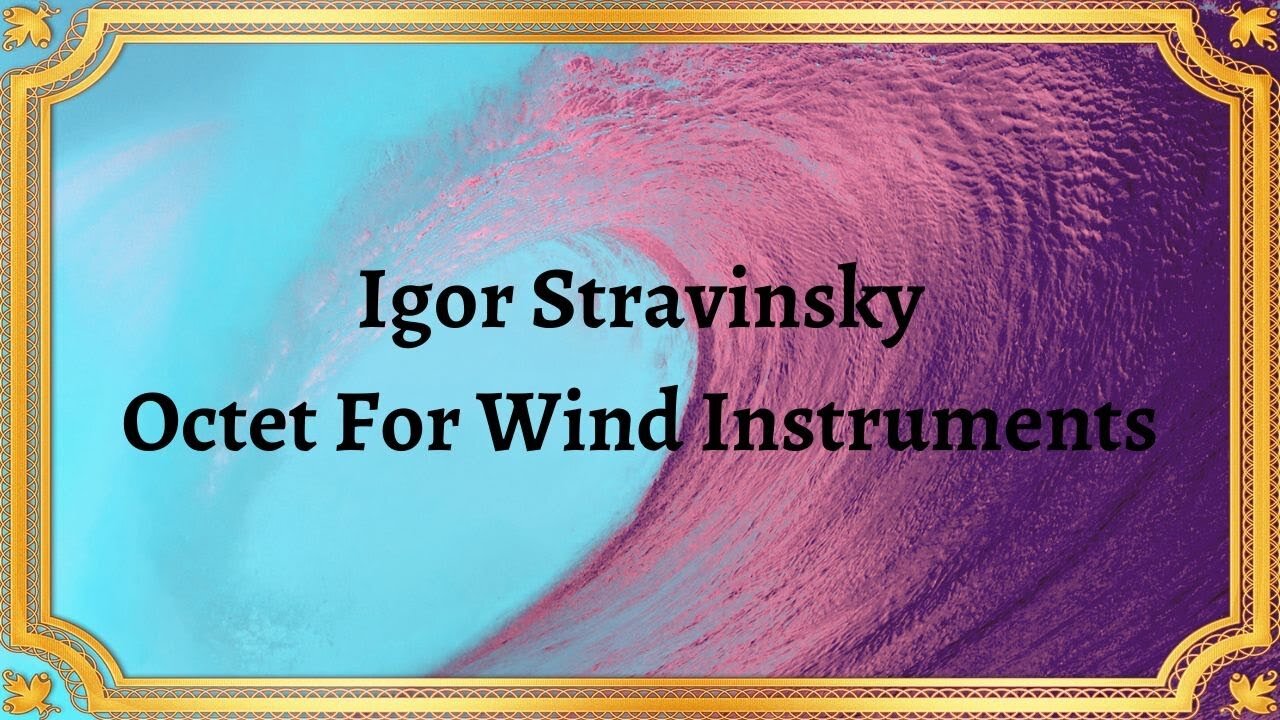Premium Only Content

Igor Stravinsky Octet For Wind Instruments
#classicalmusic #IgorStravinsky #OctetForWindInstruments #neo-classicalera #Baroque #jazz #musicalinstruments #musicalcomposition #musicalgenres #musicappreciation #musicians
Publication date 1950
Leonard Bernstein; Boston Symphony Orchestra
Igor Stravinsky's Octet for Wind Instruments is a ground-breaking musical composition that captures the essence of his musical genius. It is one of his most renowned works of the neo-classical era, presenting a unique blend of traditional and modern musical styles. The piece is a stunning example of Stravinsky's ability to bend traditional forms into something new and innovative.
Composed in 1923, Octet for Wind Instruments was commissioned by the conductor Ernest Ansermet just two years after Stravinsky's successful ballet "The Rite of Spring." At the time of its composition, Stravinsky was exploring the possibilities of neo-classicism, blending the traditions of the past with contemporary compositional techniques and modern instrumentation.
The piece takes inspiration from Baroque compositions and traditional octets, featuring a complex interplay of different wind instruments, including flute, clarinet, oboe, bassoon, horn, trumpet, trombone, and bass trombone. The composition is structured in three distinct movements, each of which takes a unique and creative approach to exploring this unique instrumentation.
The first movement, titled "Sinfonia," begins with a rich, layered dialogue between the wind instruments that combines intricate melodies with rich harmonies. Despite its neo-classical structure, the dynamic and unpredictable nature of the piece connects it to the rhythms and tonalities of modern jazz.
The second movement, "Tema con variazioni," provides a stark contrast to the first, opening with a simple, delicate statement that transforms through a series of modulations and variations. The piece's rich harmonies and unpredictable rhythms are carried through into this movement, which explores the resonant qualities of the wind instruments.
The third and final movement, "Finale," is a rousing and energetic conclusion to the piece. Stravinsky masterfully weaves the different wind instruments together, culminating in a thrilling and joyous finale that showcases the brilliant interplay of the octet.
Octet for Wind Instruments stood out from the works of other composers of the time due to its unusual instrumentation and innovative approach to composition. Stravinsky had taken an established classical form and reimagined it for the modern world, cementing his position as one of the most important composers of the 20th century.
In conclusion, Igor Stravinsky’s Octet for Wind Instruments is a masterpiece that showcases his exceptional talent in blending diverse musical styles to create something truly compelling.
You have the opportunity to support the channel https://destream.net/live/RadSiarAl/donate
-
 16:45
16:45
Classical music_Music Inspiration
13 days agoSamuel Barber String Quartet, Op. II
552 -
 UPCOMING
UPCOMING
The Shannon Joy Show
2 hours agoCOVID Not A ‘Lab Leak’, It Was Created At UNC Chapel Hill! LIVE - Exclusive With Dr. David Martin
2312 -
 LIVE
LIVE
LFA TV
5 hours agoLFA TV ALL DAY STREAM - THURSDAY 9/4/25
4,720 watching -
 LIVE
LIVE
Grant Stinchfield
43 minutes agoGas Prices Broke Him – Newsom Quits the Fight!
120 watching -
 LIVE
LIVE
Trumpet Daily
20 minutes agoTrumpet Daily LIVE | Sept. 4, 2025
258 watching -
 1:01:50
1:01:50
VINCE
3 hours agoEpstein Victims Have Come Forth, The Names Have Not | Episode 118 - 09/04/25
140K79 -

Badlands Media
6 hours agoBadlands Daily: September 4, 2025
35.1K2 -
 1:40:33
1:40:33
Dear America
3 hours agoEpstein Victims Vow To EXPOSE Everyone! + Are China and Russia Planning Against Trump?!
106K51 -
 LIVE
LIVE
Law&Crime
3 hours ago $2.12 earnedLIVE: Adelson Matriarch Murder Trial — FL v. Donna Adelson — Day 9
265 watching -
 LIVE
LIVE
The Big Mig™
2 hours agoCartels Are On Borrowed Time, Here Comes The BOOM!
4,473 watching